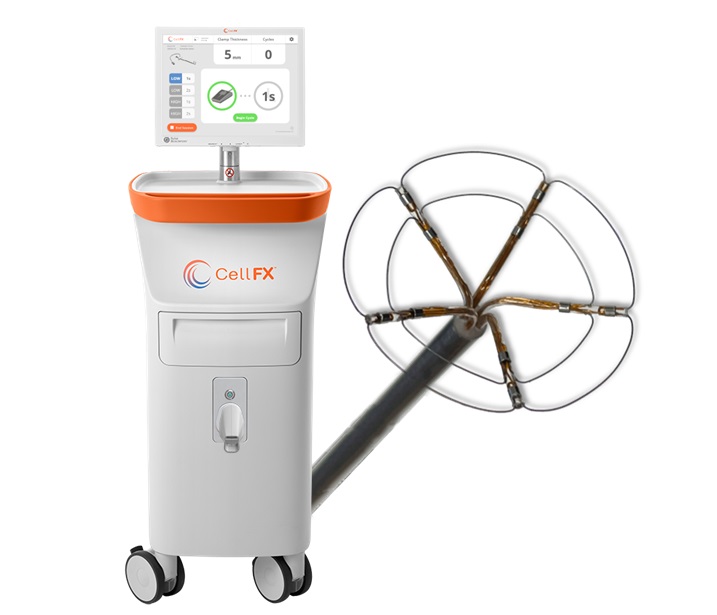Nanosecond Pulsed Field Ablation Technology Effective in Treating Atrial Fibrillation in Cardiac Surgery
|
By HospiMedica International staff writers Posted on 12 Aug 2024 |

A new method for surgical cardiac ablation designed to create continuous linear transmural ablations during cardiac procedures offers significant safety and performance advantages over existing thermal ablation techniques. This approach has the potential to shorten procedure times and reduce the risk of collateral damage to surrounding tissues.
Pulse Biosciences’ (Hayward, CA, USA) Cardiac Surgery System with Surgical Clamp is designed to produce durable and continuous transmural ablation lesions during cardiac surgeries to treat atrial fibrillation. The bipolar clamp employs the company's unique Nanosecond Pulsed Field Ablation (nsPFA) technology. Pre-clinical studies have shown that a single application with the Surgical Clamp, lasting less than two seconds, can create a consistent, durable transmural ablation. This is significantly faster, taking about one-twentieth of the time required by current thermal ablation methods. Additionally, the non-thermal nature of nano-PFA eliminates the risk of thermal spread, which can cause unintended damage to nearby tissues, making it a safer alternative to thermal radiofrequency ablation.
The nano-PFA Cardiac Surgical System was granted FDA Breakthrough Device Designation in early July 2024. Pulse Biosciences has now announced the successful treatment of the first two patients in a first-in-human feasibility study using this novel Cardiac Surgery System for cardiac tissue ablation to treat atrial fibrillation. This multicenter study will involve up to 30 patients and will include endocardial catheter-based remapping to confirm chronic isolation approximately three months post-treatment. The initial procedure results demonstrated effective pulmonary vein and ‘box’ isolation using Pulse’s Cardiac Surgery System. Surgeons were able to quickly and efficiently create linear ablations, accomplishing the task in a fraction of the time required by current thermal techniques like radiofrequency or cryoablation.
“These initial treatment results confirm our preclinical work with the cardiac surgical system. The patients tolerated our procedure well. We are pleased to see how the intuitive design of the device facilitates an efficient procedure where surgeons can create controlled lesions with adequate depth very rapidly,” said Dr. Gan Dunnington, Chief Medical Officer, Cardiac Surgery of Pulse Biosciences. “We are excited to continue enrollment in this feasibility clinical study, which is intended to demonstrate the device’s safety, effectiveness and durability profile.”
Related Links:
Pulse Biosciences
Latest Surgical Techniques News
- Bioprinted Aortas Offer New Hope for Vascular Repair
- Early TAVR Intervention Reduces Cardiovascular Events in Asymptomatic Aortic Stenosis Patients
- New Procedure Found Safe and Effective for Patients Undergoing Transcatheter Mitral Valve Replacement
- No-Touch Vein Harvesting Reduces Graft Failure Risk for Heart Bypass Patients
- DNA Origami Improves Imaging of Dense Pancreatic Tissue for Cancer Detection and Treatment
- Pioneering Sutureless Coronary Bypass Technology to Eliminate Open-Chest Procedures
- Intravascular Imaging for Guiding Stent Implantation Ensures Safer Stenting Procedures
- World's First AI Surgical Guidance Platform Allows Surgeons to Measure Success in Real-Time
- AI-Generated Synthetic Scarred Hearts Aid Atrial Fibrillation Treatment
- New Class of Bioadhesives to Connect Human Tissues to Long-Term Medical Implants
- New Transcatheter Valve Found Safe and Effective for Treating Aortic Regurgitation
- Minimally Invasive Valve Repair Reduces Hospitalizations in Severe Tricuspid Regurgitation Patients
- Tiny Robotic Tools Powered by Magnetic Fields to Enable Minimally Invasive Brain Surgery
- Magnetic Tweezers Make Robotic Surgery Safer and More Precise
- AI-Powered Surgical Planning Tool Improves Pre-Op Planning
- Novel Sensing System Restores Missing Sense of Touch in Minimally Invasive Surgery
Channels
Critical Care
view channel
Mechanosensing-Based Approach Offers Promising Strategy to Treat Cardiovascular Fibrosis
Cardiac fibrosis, which involves the stiffening and scarring of heart tissue, is a fundamental feature of nearly every type of heart disease, from acute ischemic injuries to genetic cardiomyopathies.... Read more
AI Interpretability Tool for Photographed ECG Images Offers Pixel-Level Precision
The electrocardiogram (ECG) is a crucial diagnostic tool in modern medicine, used to detect heart conditions such as arrhythmias and structural abnormalities. Every year, millions of ECGs are performed... Read morePatient Care
view channel
Portable Biosensor Platform to Reduce Hospital-Acquired Infections
Approximately 4 million patients in the European Union acquire healthcare-associated infections (HAIs) or nosocomial infections each year, with around 37,000 deaths directly resulting from these infections,... Read moreFirst-Of-Its-Kind Portable Germicidal Light Technology Disinfects High-Touch Clinical Surfaces in Seconds
Reducing healthcare-acquired infections (HAIs) remains a pressing issue within global healthcare systems. In the United States alone, 1.7 million patients contract HAIs annually, leading to approximately... Read more
Surgical Capacity Optimization Solution Helps Hospitals Boost OR Utilization
An innovative solution has the capability to transform surgical capacity utilization by targeting the root cause of surgical block time inefficiencies. Fujitsu Limited’s (Tokyo, Japan) Surgical Capacity... Read more
Game-Changing Innovation in Surgical Instrument Sterilization Significantly Improves OR Throughput
A groundbreaking innovation enables hospitals to significantly improve instrument processing time and throughput in operating rooms (ORs) and sterile processing departments. Turbett Surgical, Inc.... Read moreHealth IT
view channel
Printable Molecule-Selective Nanoparticles Enable Mass Production of Wearable Biosensors
The future of medicine is likely to focus on the personalization of healthcare—understanding exactly what an individual requires and delivering the appropriate combination of nutrients, metabolites, and... Read more
Smartwatches Could Detect Congestive Heart Failure
Diagnosing congestive heart failure (CHF) typically requires expensive and time-consuming imaging techniques like echocardiography, also known as cardiac ultrasound. Previously, detecting CHF by analyzing... Read moreBusiness
view channel
Expanded Collaboration to Transform OR Technology Through AI and Automation
The expansion of an existing collaboration between three leading companies aims to develop artificial intelligence (AI)-driven solutions for smart operating rooms with sophisticated monitoring and automation.... Read more

















